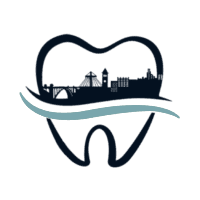Learn More About Extractions:
When your teeth have become so damaged or decayed that repair is impossible, it’s time for a dental extraction. This procedure is done to help avoid the advance of serious oral health problems, including overcrowding, spreading decay, advanced periodontitis, or impaction. Dr. Ulysses Vargas’s goal is to preserve the health of your natural teeth, so extraction will be last in line for dental solutions offered. Only when other treatments have been attempted or ruled out as a viable option will extraction be on the table.
Dental extractions fall into two distinct categories depending on the complexity of the treatment; these categories include:
- Simple Extractions – Through the use of a special elevator tool to lift the tooth out of the socket and forceps to grip and remove it, a simple extraction is performed. This is the most common form of extraction and is appropriate when a tooth is in one piece and can be easily removed.
- Surgical Extractions – When a tooth is in multiple pieces or is in a location that cannot be accessed using an elevator and forceps, a surgical extraction may be necessary. Incisions will need to be made in the gums and occasionally the bone to access the extraction site. This is the usual method of extracting wisdom teeth.
What To Know About Extractions:
Patients are often concerned about lasting damage caused by surgical extractions, but there’s nothing to fear. Surgical extractions are an effective method of limiting tissue trauma, speeding recovery, and limiting discomfort from dental extractions.
Frequently Asked Questions:
Is A Dental Extraction Appropriate For Me?
If you find that you have decay or damage affecting one or more teeth, a dental extraction may be called for. Overcrowding is often another reason for this procedure, as are orthodontic procedures where the removal of teeth is necessary to produce the desired results. You’ll receive a consultation on whether extraction is appropriate for you during your exam with Dr. Ulysses Vargas.
What Happens During An Extraction At South Hill Comprehensive Dentistry?
While both forms of extraction involve the use of some degree of anesthetic, a localized form is generally used in a simple extraction. Anxious patients may be provided with nitrous oxide, while more significant anesthetics will be used for those undergoing a surgical extraction. In some cases, general anesthesia, which renders you unconscious, may be necessary.
During your consultation, Dr. Vargas will inform you whether a surgical or simple extraction will be necessary to achieve your dental health goals. Generally, this choice will be final, but during your procedure, new information may appear that changes what’s needed. This will be decided with you during the treatment.
What Is Recovery From Dental Extraction Like?
In the case of a simple extraction, most patients report a mild puffiness in the area around the extraction site. This is due, in part, to the remaining numbness caused by the anesthesia and the presence of cotton and gauze used to pack the site. The actual swelling should be minimal after a simple extraction, and this is also often the case after a surgical procedure.
With both forms of extraction, some degree of bleeding afterward may be expected. It should also be controlled by the application of gauze and cotton. A moist tea bag can be used at home if mild bleeding persists. The use of ice around the surgical site can also ease any lingering swelling afterward. Straws, crunchy, sharp, or fragmented foods should be avoided during your recovery period. Soft, cool foods such as ice cream, pudding, smoothies, and the like are optimal after treatment.
Contact us at South Hill Comprehensive Dentistry in Spokane, WA, to ask more about the dental extraction process. We can arrange for a visit with Dr. Vargas, who will discuss your treatment options and whether an extraction is appropriate for you.



